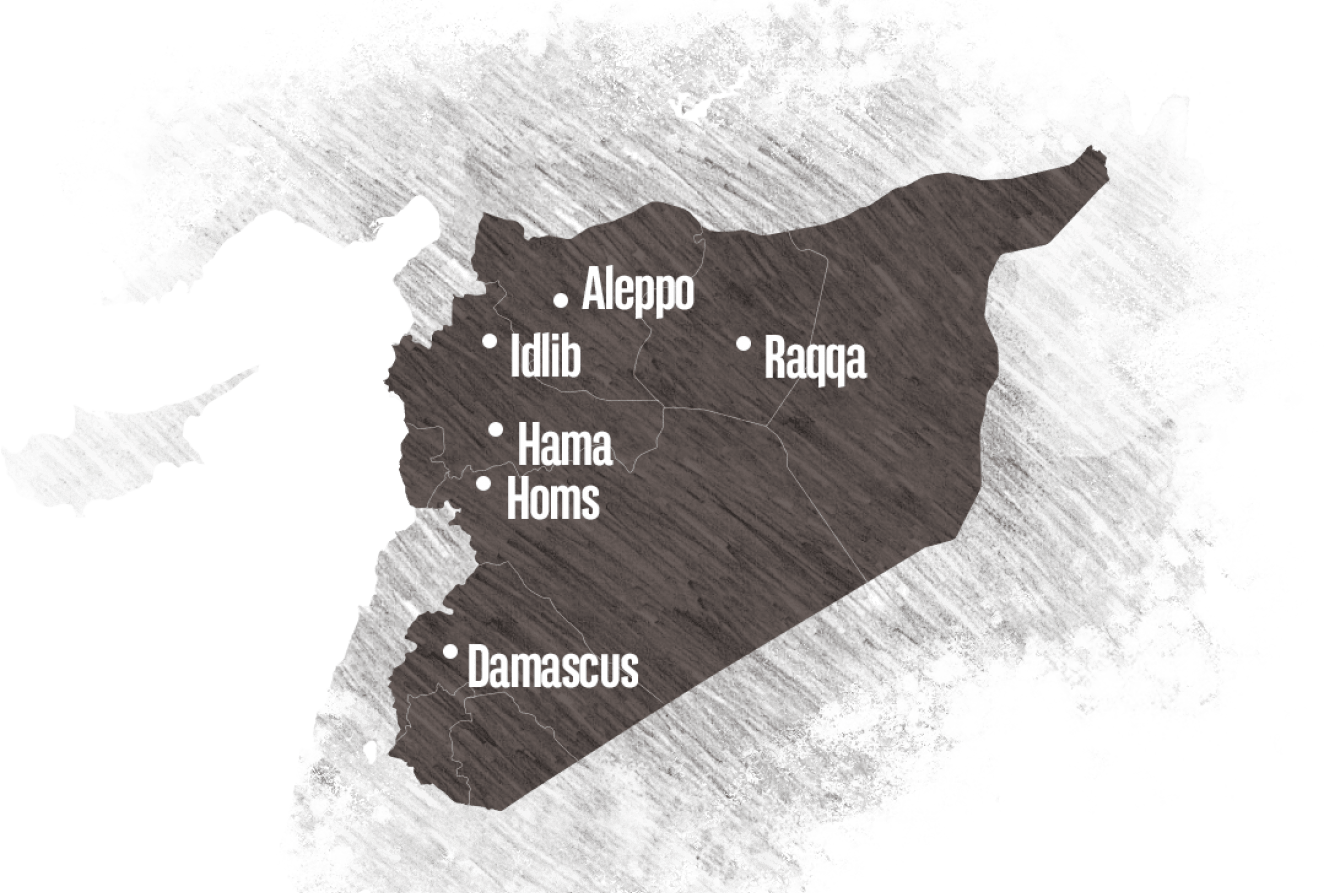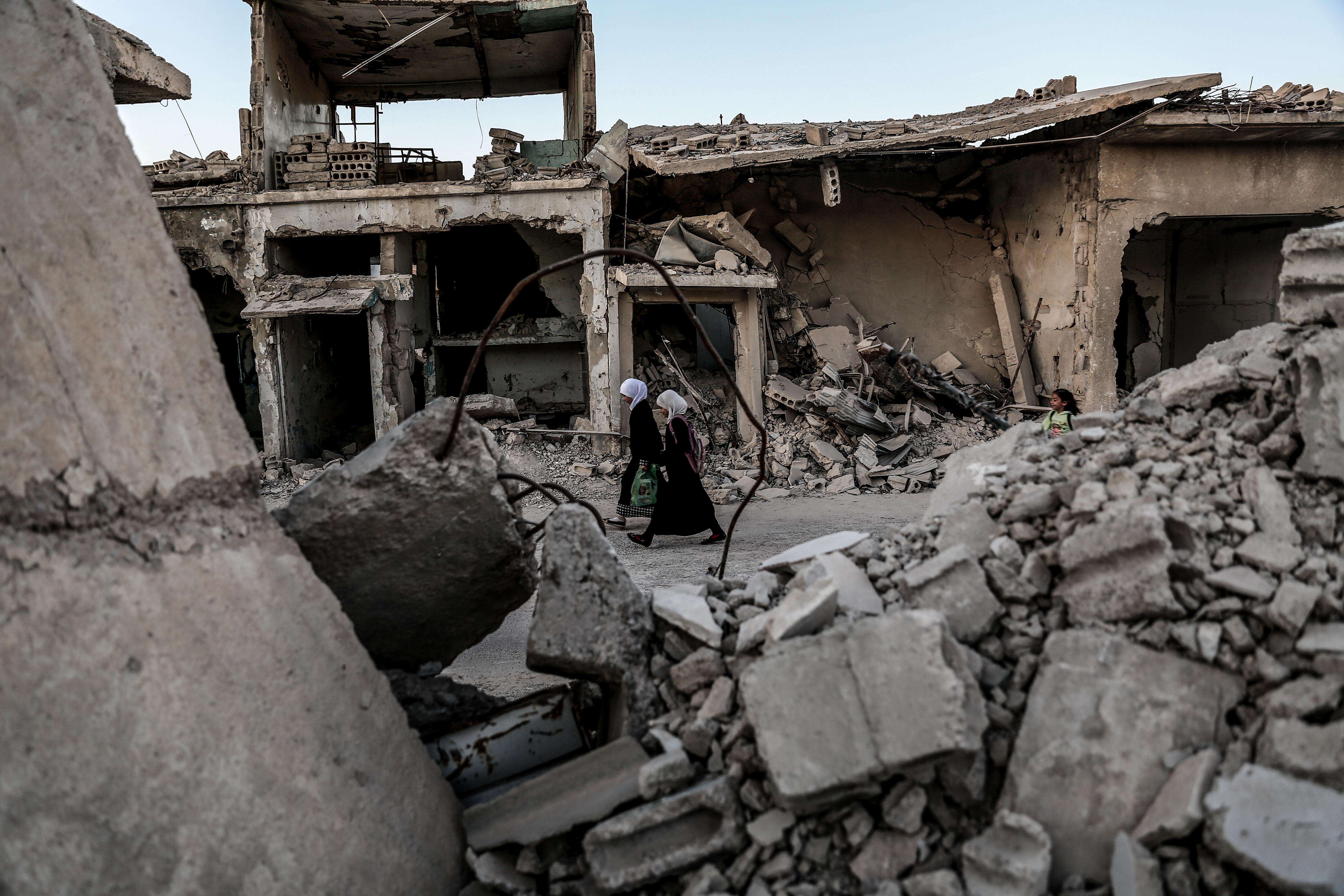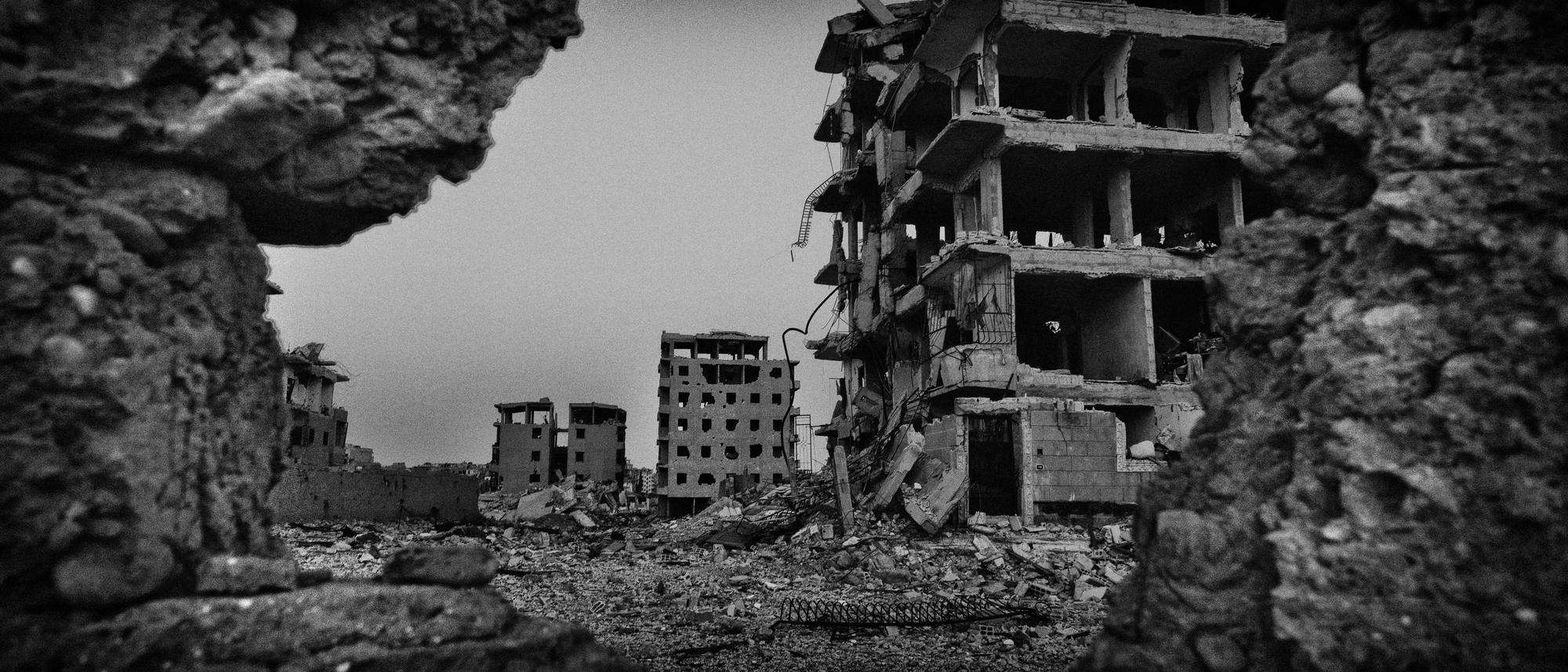While much of the world has turned away from the staggering scale of the ongoing humanitarian crisis in Syria, we wanted to look deeper. After a decade of conflict, 6.6 million people have been uprooted inside Syria—the largest number of internally displaced people anywhere in the world. Many families have been forced to flee repeated cycles of violence. Another 5.6 million Syrian refugees have fled to other countries for safety.
Behind these terribly large numbers are, of course, individual human beings. Doctors Without Borders/Médecins Sans Frontières (MSF) teams have been working in Syria throughout the long, brutal conflict. In this multimedia documentary—"No way out"—we bring you into the lives of some of the people we’ve met along the way in Idlib, in overcrowded camps and settlements still vulnerable to airstrikes. These are the survivors.
In 2012, Syria’s government adopted a law criminalizing medical activities in opposition-held areas. MSF teams began working in these areas to provide much-needed medical aid, although this was not authorized by the Syrian government. We also started cross-border operations to deliver tons of medicines and medical supplies to health centers in Aleppo, Damascus, Daraa, Hama, and Homs provinces.

A widening war
As fighting began to intensify, a rising number of medical facilities were affected. In July 2011, the Syrian army deployed tanks in Homs, the third-largest city and an opposition stronghold. In February 2012, Syrian government forces began an all-out assault on the city. A bloody siege lasted for nearly three years, with civilians trapped in the fighting. Abu Alaa, a citizen journalist, recalled his family's experience living under fire. Journalist and humanitarian aid worker Tarek Baderkhan was born in Homs and remained in the city for as long as he could. When his hometown fell to the Syrian army in 2015, he was evacuated by bus to the countryside north of the city. His body was scarred by shrapnel wounds.
On August 21, 2013, the Syrian government launched airstrikes and alleged chemical attacks in Ghouta. That morning, in less than three hours, three hospitals supported by MSF treat 3,600 patients showing symptoms of exposure to a toxic agent. We know that 355 people died in these facilities; there are estimates that as many as 2,000 people were killed in these attacks. Imad Youssef is a former construction worker from Zamalka, one of the areas that was hit.
Hospitals under attack
Attacks on health facilities have occurred throughout the conflict, depriving communities of vital services. People started avoiding hospitals for fear of being bombed, arrested, or tortured.
Early on, in 2012, MSF established two hospitals in Idlib province and a third in Aleppo. In June, we helped set up a trauma surgery unit in a house in Atmeh. To protect themselves from the repeated attacks on medical facilities, the team from Jabal Al-Akrad hospital worked in a cave, and then a farmhouse turned into an emergency department with an operating theater. Practicing clandestine medicine, away from the airstrikes, became commonplace.
Throughout 2013, MSF donated on average some three tons of supplies and equipment a day to a network of 40 hospitals and 60 clinics across seven provinces. The health system was collapsing in opposition-held areas, which received little humanitarian aid.
In 2015 alone, MSF counted 94 airstrikes and rocket attacks on 63 health facilities it supported. Between 30 to 40 percent of the victims of violence treated in our supported health centers were women and children, a clear indication that civilian areas were constant targets of airstrikes and attacks.
On February 15, 2016, Syrian forces and their Russian allies bombed an MSF-supported hospital in Maarat Al Numan in Idlib. Four rockets hit the hospital in two separate attacks launched within minutes of each other, leaving 25 people dead and 11 wounded. This was the third time the Maarat Al Numan hospital had been targeted since the start of the war. The "double-tap" attack strategy has been documented in other airstrikes on Syrian medical facilities. The second attack is timed to strike when first responders are on the scene tending to the victims of the first hit. Dr. Mazen Al Saud arrived at the hospital to find his patients, colleagues, and friends buried under the rubble. "I was so shocked," he said.
On April 27, 2016, at the height of the Syrian government’s offensive on opposition-held east Aleppo, the district around Al Quds hospital came under a barrage of fire. That evening, Ain Jalout school across the street was bombed. After the first strike, medical staff from Al Quds were treating and transporting wounded people to the hospital. Not long afterward, a second strike hit the house below where hospital personnel were living.
A few years later, in December 2019, despite Russia's announcement of a unilateral ceasefire, the Syrian government launched another massive offensive to take opposition-held territory. Over the next three months, more than 1.5 million people in Idlib and Aleppo provinces were forced to flee--the biggest internal displacement since the war began. By this time, there were only about 300 health facilities left in this region, half the number before the war. Meanwhile, Idlib’s population had more than doubled with the influx of displaced people squeezed into a narrow enclave.
Mustafa Ajaj, who runs a health care facility in Deir Hassan camp in Idlib, has been displaced six times. A father of five, he has witnessed relentless and targeted attacks on medical workers and facilities since the beginning of the war.
Violence by all sides
Over 10 years of war, Syria’s civilian population has faced extreme levels of violence from all sides. None of the forces involved in the conflict—whether the Syrian government and its allies, the Islamic State group (IS), or the US-led international coalition—showed any mercy.
In June 2017, the Syrian Democratic Forces (SDF) backed by the US-led international coalition air force launched a major military offensive against the IS in Raqqa, making no distinction between combatants and civilians. That month, MSF teams working in Kobane/Ain al Arab hospital, about two-and-a-half hours' drive from Raqqa—treated just 64 war-wounded patients. The contrast between the intense violence of the offensive and the relatively small numbers of wounded people who emerged for treatment was shocking. Some 30,000 to 50,000 civilians remained trapped inside a city under bombardment. IS fighters used the residents as human shields. An investigation by Amnesty International and Airwars later revealed the scale of the civilian fatalities: over 1,600 people were killed by coalition bombs during the offensive on Raqqa.
People trapped in Raqqa endured persecution under IS control, followed by the coalition’s indiscriminate airstrikes. Khalaf Al Malla is a schoolteacher who fled after his home was raided by IS. During his last two months there, he felt like a prisoner confined to his home. "Going out meant getting killed, either mentally or physically," he said. Fatima Al Ali and her family endured many hardships in Raqqa, but were not able to leave. She also lived in constant fear during the coalition offensive, with airstrikes raining down and IS taking over people's homes. Those who managed to survive were considered IS sympathizers, at risk of indefinite detention without trial.
Uncertain future
Over years of war and cycles of displacement, Syrians fleeing the violence have crowded into Idlib province, hemmed in to the north by the Turkish border. These families live in miserable conditions, many of them sheltering in camps where MSF provides medical and humanitarian aid. The last opposition stronghold, Idlib is regularly the target of airstrikes launched by the Syrian government and its Russian ally.
Each time these people are uprooted and forced to resettle, they face greater hardship. The latest economic crisis has made their situation even worse. In less than 12 months, the Syrian pound has lost 98 percent of its value against the US dollar—partly due to the crisis in Lebanon, the devaluation of the Iraqi dinar, the impact of the US sanctions, and the COVID-19 pandemic.
They are still exposed to airstrikes, particularly during the Syrian government’s military offensives, and even when they live in clearly marked camps for internally displaced people.
Living conditions are disastrous. In a region where 2.8 million people already depend on humanitarian aid for their basic needs—food, water, shelter, health care, and education—every new military attack, every economic crisis affects a population left shattered by ten years of war.
Amani Al Ali is a cartoonist who stayed on in Idlib city, even after it emptied out, in order to take care of her mother. "The war affected me psychologically," she said. "But it also gave me the motivation to keep drawing."
Today, MSF teams continue to operate in Syria, but our activities are limited by insecurity and access constraints. MSF currently conducts activities in northeast and northwest Syria. We cannot work in government-controlled areas in Syria, as repeated requests for permission have not been granted.





